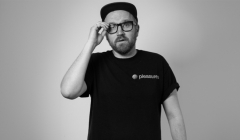
Creativity in 2025: Smaller, sharper, and a little less purposeful
Scott Dimbleby strives for a year of embracing fun and humour to offer audiences escapism.

The buzz surrounding the Barbie film is far from accidental says Born Social’s Essi Nurminen

We’ve all seen it by now; the initial brand reactions, the TikTok reactions to the promos, the Airbnb Malibu DreamHouse, the already iconic soundtrack (which in true 90’s style is also available on cassette), I could go on. Users across TikTok have claimed this summer as the official Barbie season - Barbiecore is well and truly here. In the golden age of cyberfeminism, how has the entire internet gone so mad for something so seemingly anti-feminist, so blatantly girly and so...pink?! Let’s unpack what’s driving the social media hype behind Barbie, the movie.

The macro movement of nostalgia seeking has been prominent on social for a while, so a film release as nostalgic as Barbie fits right into the zeitgeist. Whether it’s Y2K fashion, overexposed flash photography or hip hop, younger generations have been drawing inspiration from the 90’s and noughties. People are turning to online worlds to escape the discomfort of their real lives, and what better place to escape to, than the plastic fantastic world of Barbie. Brands have also found a way to support creators in bringing their Barbie fantasies to life by developing merch real life Barbies would wear. And those skilled enough have designed their own costumes for different Barbie characters to truly insert themselves into the experience (I choose Odette, thank you for asking).
You can’t deny it, the specific shade of vibrant Barbie pink is hugely distinctive and the brand has played with it very well. The solid pink billboards simply stating the movie release date have got people talking about it on social but are also a clever way of reinforcing their distinctive brand assets. It’s a clever way for brands to tap into the conversation about the film release without ever mentioning the word, ‘Barbie’. Brands, like Fenty Beauty, have borrowed visual cues from the world of Barbie and left their community to fill in the blanks. This also taps into a broader visual movement on social. After several years of minimalist visuals and blanding, the use of monochromatic or minimal design that defined the 2010s, has finally seen a significant shift towards more maximalist self-expression. This translates to the way younger people are producing content but also styling their homes and themselves. It seems like for both Barbie stans and Gen Z, more is more.
While a lot of the buzz is happening on social, a huge part of the strategy has been blending digital experiences with physical ones - going fully phygital (sorry). A great example of this is the partnership with Xbox, resulting in a pink console and controller, ready to be inserted into your very own Dreamhouse. It allows people to bring a little bit of Barbie into their own life. Similarly, those who play Forza Horizon 5 are able to choose to cruise around in Barbie’s classic 1956 Chevrolet Corvette, in pink, naturally. But if you’re feeling more like Ken, you can opt for a Hummer EV Pickup instead. It’s really these partnerships that have allowed the brand to transform from a doll to a lifestyle brand people can, and want to, interact with. And we all know the power immersive experiences can have on driving brand salience.

While Barbie’s marketing team has been praised for the ingenious launch campaign, in a recent Drum article, Mattel’s president and chief operating officer, Richard Dickson, says the brand hasn’t actually done much marketing. However, what it has done is create “very precisely-curated pieces that can go viral”. The brand has certainly understood the compounding effect of diversifying your marketing channels to create an effect of seeing the content everywhere. This is a combination of slick media planning but also simply passing the mic to their partners, communities, and creators. The power of a trustworthy source hyping up the release is much more impactful than the message coming from the brand itself.
Overall, the buzz surrounding the film is far from accidental and I’m eagerly waiting to see how the brand will continue to drive engagement beyond the launch. It’s clear the Barbie brand has managed to shake the rather problematic connotations of the past, and audiences from young to old are ready for Barbie’s new era. And with a tagline as empowering as “You can do anything”, who wouldn’t want to be a Barbie girl, in a Barbie world...
Essi leads the Strategy department at Born Social, consisting of Data & Insight, Strategy & Media Planning teams. She’s been in social for over a decade, first at We Are Social London working on some of the agency’s largest accounts including Netflix and Heineken. During her time at Born Social she’s planned social activations for the likes of Primark, Tinder, Veet, and more recently, Uber and Uber Eats.
Looks like you need to create a Creativebrief account to perform this action.
Create account Sign inLooks like you need to create a Creativebrief account to perform this action.
Create account Sign in